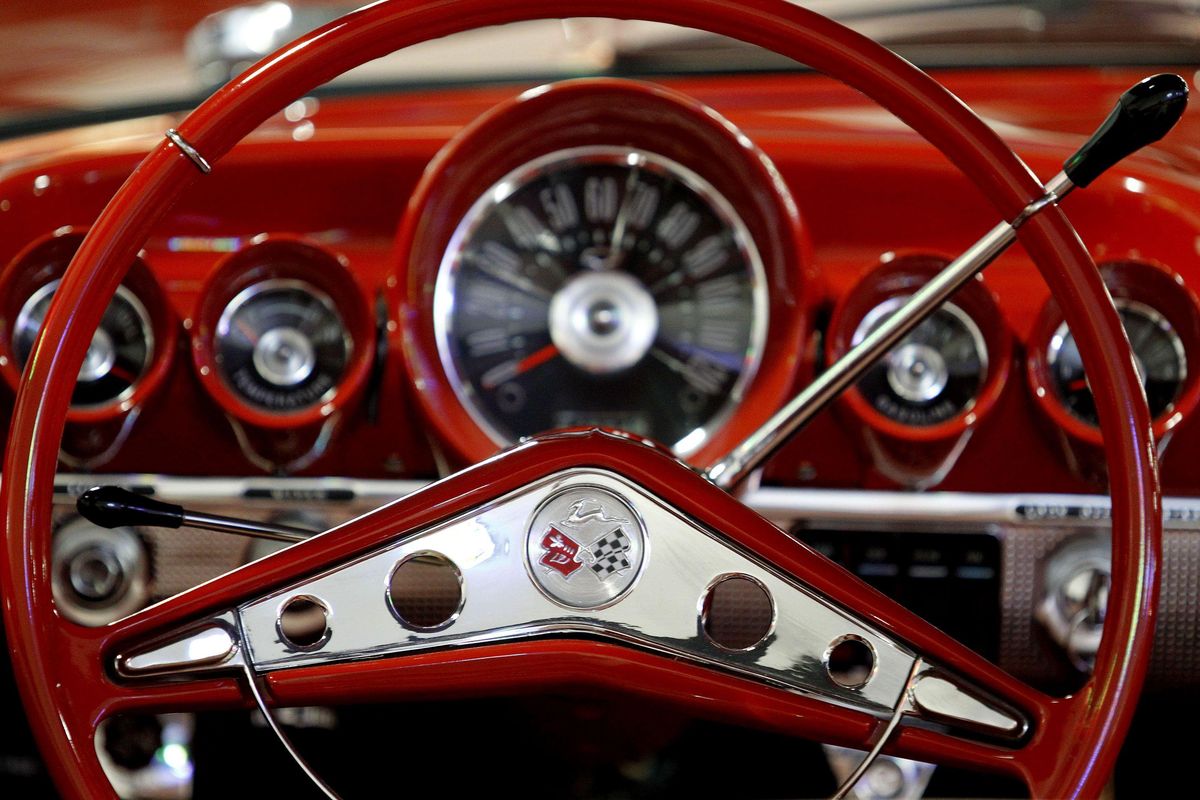General Motors to discontinue Chevy Impala amid plant closures

DETROIT – General Motors plans to ax the Chevrolet Impala as part of its dramatic restructuring announced this week, ginning up nostalgia for a vehicle name that first appeared in the 1950s.
The Impala has been called one of America’s most iconic nameplates, but after 10 generations, the current sedan appears to share little but the name with its ancestors even as it has had some notable milestones in the not-too-distant past.
These days, the Impala appears to be a staple at the rental car counter and a long journey from the candy apple red 1963 Impala with 11.5 miles on the odometer that drove grown men to tears, as the Free Press reported, when it appeared this spring at Cobo Center as part of Autorama.
John Wiley, an analyst for the Hagerty Price Guide, noted what appears to mark a shift in the once-classic vehicle’s pedigree and its desirability among enthusiasts.
“In 2006, the Chevrolet Impala switched to a front-wheel-drive platform, and while some were available with a V8, the model did not stay as close to its roots as cars like the Pontiac G8, which remained rear-wheel-drive. Consequently, the discontinuation of the Impala is unlikely to have a major impact on the collectibility of the current cars or the older models,” according to Wiley.
The Hagerty Price Guide notes that “the most valuable Impala is the 1963 Z11 Lightweight Sport Coupe with a 427 (cubic inch displacement)/430 hp V8, and a #3 value of $282,000.” That value represents a car in good condition but not necessarily one in perfect condition. The same car in the best possible condition would be valued at $445,000, according to the guide.
Still as recently as 2013, the Impala, which shares a name with a fleet-footed antelope, was turning heads and making a statement as an example of Detroit’s resurgence after the dark days of the recession.
That year, Consumer Reports raved about a 2014 redesign, which it described as the “phoenixlike rise” of the revamped Impala. The magazine said the car was its top rated sedan that year.
“It has been transformed from a woefully uncompetitive and outdated model that was to be avoided even as a free upgrade at the rental-car counter into a thoroughly modern and remarkably enjoyable vehicle,” the magazine reported then.
Still, the eyes show that five years on, in the midst of the cratering of the passenger car market, the previously notable redesign prompted the Pittsburgh Post-Gazette to say a year ago that it had become a solid vehicle that deserves an update. With automakers abandoning their passenger car models in favor of SUVs and trucks, the writing, as they say, was on the wall.
How times have changed.
The first Impala, a 1958 model, was actually the top trim level for the Chevy Bel Air, and its fins and robust styling scream classic.
“Its success as a long, wide, and luxurious family sedan forced Chevy to separate it into its own model, creating what was soon to be America’s best-selling full-size car. Over the years, the Impala has made many distinct styling impacts with its wild rear ends and iconic grilles,” according to an article on “The Complete History of the Chevrolet Impala.”
In the ensuing years, Impalas also made an impression, with Free Press auto critic Mark Phelan calling the 1965 Impala an icon of the American road:
“It was a bestseller that offered everything from a family-carrying sedan to a V8 muscle car and a slick convertible. It was one of Detroit’s triumphs.”
Impalas have been notable enough to appear in movies ranging from “Saturday Night Fever” to “Raising Arizona.” And the Impalas of the 1970s look made for gritty cop dramas. The 1989 Batmobile was even “based on the platform of a 1967 Chevrolet Impala found in London,” according to the Petersen Automotive Museum.
But some of the Impalas of the 2000s before the 2014 redesign were as bland on the outside as any passenger cars Detroit has produced.
And that might be reflected at least a bit in who’s held onto them, with Hagerty’s Wiley noting that “the number of collectors that own a modern (fwd) Impala compared to the number that own a pre-1977 Impala is 0.06 percent.”